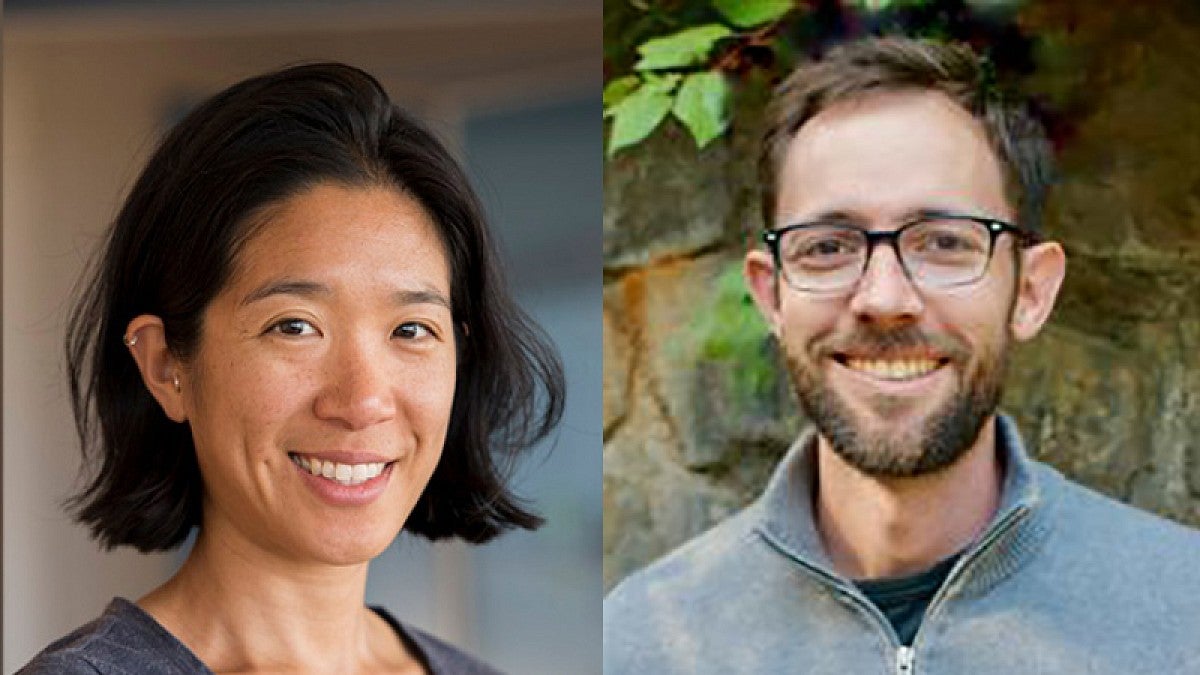A pair of UO faculty members have received one of the most prestigious awards from the National Science Foundation to pursue research projects in their respective fields.
Physicist Tien-Tien Yu and biochemist Scott Hansen were named recipients of the NSF’s Career Awards, which fund research and education activities for five consecutive years. The foundation grants the awards once a year and they are among the most sought-after grants awarded by the agency.
Career Awards support early career researchers who have the potential to drive advances in their fields and to serve as academic role models in their departments and beyond.
Yu’s research project, “Searching for Dark Sectors from Earth to Sky,” focuses on uncovering new knowledge about dark matter, material that makes up about 80 percent of the matter in the universe but remains shrouded in mystery.
Much is still unknown about dark matter because it does not absorb, reflect or emit light, making it hard to detect and observe. But scientists do know that dark matter influences gravity, which has been noted through its effects on astrophysical objects like stars and galaxies. That clue leads scientists to believe that dark matter has mass, but there are many possibilities for what that mass might be.
Yu will tackle that gap in knowledge by searching for and trying to understand a range of dark matter theories. She hopes her research helps stitch together more information about dark matter’s mass and its other properties.
“Research on dark sector physics promotes the progress of science in one of its most fundamental directions: the discovery and understanding of new physical laws,” Yu said. “This project is envisioned to have significant broader impacts by providing the foundational research for potential transformative discoveries.”
Yu also plans to make her research accessible to a broad audience by incorporating visual media to help explain the complex subject matter. She is collaborating with the UO’s comic studies program to produce engaging comics to integrate into the presentation of her research.
“By integrating visual media, this program provides an unconventional avenue for presenting scientific research while simultaneously providing engaging, informal STEM education to a broad audience, including humanities and design students,” Yu said.
Hansen’s project “Mechanisms Controlling Spatial Patterning of PIP Lipids in Eukaryotic Cell Polarity,” will look at mechanisms that help control cellular organization. Hansen will use a multidisciplinary approach to directly visualize how collections of biochemical reactions collaborate to generate cellular organization. The research will strengthen the understanding of molecular processes that underlie tissue organization, asymmetric cell division and cell movement.
“The ability of cells to regulate the localization of molecules in both time and space is the hallmark of cellular organization,” Hansen said. “This research project will identify principles and signaling network architectures that are important for establishing communication between different classes of membrane signaling reactions that control cell polarity.”
Hansen will also turn to visual media to help make his research accessible to an audience outside his field and to improve science literacy through visual arts. He will partner with the UO’s College of Design and ArtSciOregon to train undergraduate researchers in how to use visual arts to communicate about science and to educate the public about scientific research and methods.
“Conveying science accurately and effectively to the public is of greater importance than ever,” Hansen said. “The project will support career development in scientific illustration and molecular visualization that bridges science, art and design.”
Both researchers will aim to address the societal impacts of their projects and will integrate educational and outreach activities to make their research accessible to the public.
—By Emily Halnon, University Communications


